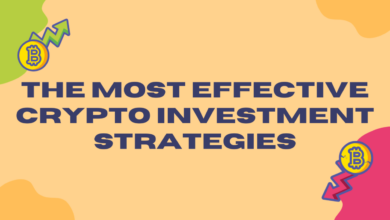
Understanding Layer 2 Solutions for Faster Crypto
Understanding Layer 2 Solutions for More Efficient Cryptocurrency Transactions is key to unlocking faster and cheaper crypto transactions. Layer 1 blockchains, while foundational, often struggle with high transaction fees and slow speeds. Layer 2 solutions act as a secondary layer, processing transactions off the main blockchain, dramatically improving efficiency without compromising security. This blog post will delve into the intricacies of Layer 2, exploring various protocols, security considerations, and the overall impact on the cryptocurrency ecosystem.
This post will cover different types of Layer 2 solutions like state channels, sidechains, and rollups. We’ll also explore how these solutions impact transaction speed and costs, as well as the security considerations that come with them. Expect a deep dive into the advantages and disadvantages of each, alongside real-world examples.
Transaction Efficiency and Speed

Source: githubusercontent.com
Layer 2 (L2) solutions are crucial for enhancing the efficiency and speed of cryptocurrency transactions, a key factor in the broader adoption of blockchain technology. They address the scalability limitations of Layer 1 (L2) blockchains by offloading transactions to a secondary layer, enabling faster processing and reduced costs. This approach allows for more frequent and cost-effective transactions, which is a major driver in the evolution of decentralized finance (DeFi) and broader cryptocurrency usage.L2 solutions achieve this by processing transactions off-chain or within a separate, more efficient environment, then confirming them on the main blockchain.
This decoupling significantly reduces the load on the main blockchain, leading to quicker transaction times and lower fees compared to direct transactions on the L1. The speed improvements are particularly noticeable for high-volume transactions, such as those occurring in decentralized exchanges or payment systems.
Improving Transaction Efficiency
L2 solutions improve transaction efficiency by utilizing various techniques. These techniques include state channels, sidechains, and rollups, each with its unique approach to handling transactions outside the main blockchain. State channels allow for a set of transactions to be processed off-chain, while sidechains create a parallel blockchain that handles transactions separately from the main one. Rollups group numerous transactions together and batch them for confirmation on the main blockchain, streamlining the process.
Understanding Layer 2 solutions for faster, cheaper crypto transactions is key. This directly impacts your crypto portfolio’s potential for growth, and finding ways to boost your returns without excessive risk is crucial. Check out this helpful guide on How to Increase Crypto Portfolio Value Without High Risks for actionable strategies. Ultimately, understanding Layer 2 solutions can help you navigate the crypto landscape more efficiently and strategically.
Comparing L1 and L2 Transaction Speeds
L1 blockchains often suffer from congestion, leading to slow transaction times and high fees. L2 solutions offer a significant improvement in this regard. For example, a transaction on a congested Ethereum (L1) network might take several minutes or even hours to confirm, while the same transaction on an L2 solution like Optimism or Arbitrum could be processed in seconds.
This disparity in speed is crucial for applications that require near-instantaneous transactions.
Factors Affecting Transaction Speed in L2 Environments
Several factors influence transaction speed within L2 environments. These include the specific L2 protocol used, the network congestion on the L2 layer, the size and complexity of the transactions being processed, and the efficiency of the underlying consensus mechanisms. Network congestion on the L2 can bottleneck transactions, similar to congestion on the main blockchain. Moreover, the method of batching and confirming transactions on the L1 plays a significant role.
Understanding Layer 2 solutions for faster and cheaper crypto transactions is crucial. However, to truly maximize the potential of these solutions, a keen eye on market trends is equally important. For example, analyzing historical data and current market sentiment can provide valuable insights, as detailed in this helpful guide on How to Predict Crypto Market Trends Using Data and Analytics.
Ultimately, a combination of strategic Layer 2 implementation and market trend awareness will be key to success in the crypto space.
Evaluating L2 Transaction Speed, Understanding Layer 2 Solutions for More Efficient Cryptocurrency Transactions
A method for evaluating the transaction speed of different L2 protocols involves benchmarking under various conditions. This includes measuring the average transaction time across different transaction volumes, observing the maximum throughput achievable under peak load, and assessing the impact of varying transaction sizes on the processing time. The evaluation should include the time from initiating the transaction to confirmation on the L1, providing a comprehensive understanding of the entire process.
L2 Transaction Throughput Comparison
| L2 Protocol | Average Transaction Time (seconds) | Maximum Throughput (transactions/second) | Typical Fees (USD) |
|---|---|---|---|
| Optimism | ~5 | 1000+ | $0.01 – $0.10 |
| Arbitrum | ~3 | 1500+ | $0.005 – $0.05 |
| Polygon | ~8 | 500+ | $0.001 – $0.02 |
| zkSync | ~2 | 1200+ | $0.001 – $0.01 |
Note: Values are approximate and can vary based on network conditions and transaction specifics. These figures represent averages and are subject to change based on various factors, and should be used as a guide only.
Understanding Layer 2 solutions for smoother crypto transactions is key, but remember that even the fastest networks need a solid risk management strategy. Without careful consideration of potential losses, as discussed in depth in The Importance of Risk Management in Crypto Trading Success , all the speed in the world won’t matter. Ultimately, a combination of understanding Layer 2 technology and applying robust risk management principles is crucial for successful crypto trading.
Closing Notes

Source: microsoft.com
In conclusion, Layer 2 solutions represent a significant advancement in cryptocurrency transaction efficiency. While challenges remain, the potential for faster, cheaper, and more scalable transactions is undeniable. From security enhancements to cost optimization, this blog post has explored the multifaceted nature of Layer 2 technologies. The future of cryptocurrency transactions likely hinges on the continued evolution and adoption of these innovative solutions.
Common Queries: Understanding Layer 2 Solutions For More Efficient Cryptocurrency Transactions
What is the difference between Layer 1 and Layer 2 blockchains?
Layer 1 blockchains are the foundational networks, like Bitcoin or Ethereum. Layer 2 solutions operate on top of these, acting as a secondary layer to process transactions more efficiently. This separation allows for faster transaction speeds and lower fees.
What are the common security concerns with Layer 2 solutions?
Security is paramount. While Layer 2 solutions aim to improve efficiency, they can still be vulnerable to attacks if not implemented and maintained correctly. The security of the underlying Layer 1 blockchain and the specific Layer 2 protocol’s design greatly influence the overall security.
How do Layer 2 solutions impact transaction costs?
Layer 2 solutions often significantly reduce transaction costs compared to Layer 1. This is because they offload some of the transaction processing burden from the main blockchain, leading to lower fees for users.
What are some real-world examples of Layer 2 solutions?
Optimism, Arbitrum, and Polygon are prominent examples of Layer 2 scaling solutions. Each employs different technologies to achieve improved transaction speeds and lower costs.






